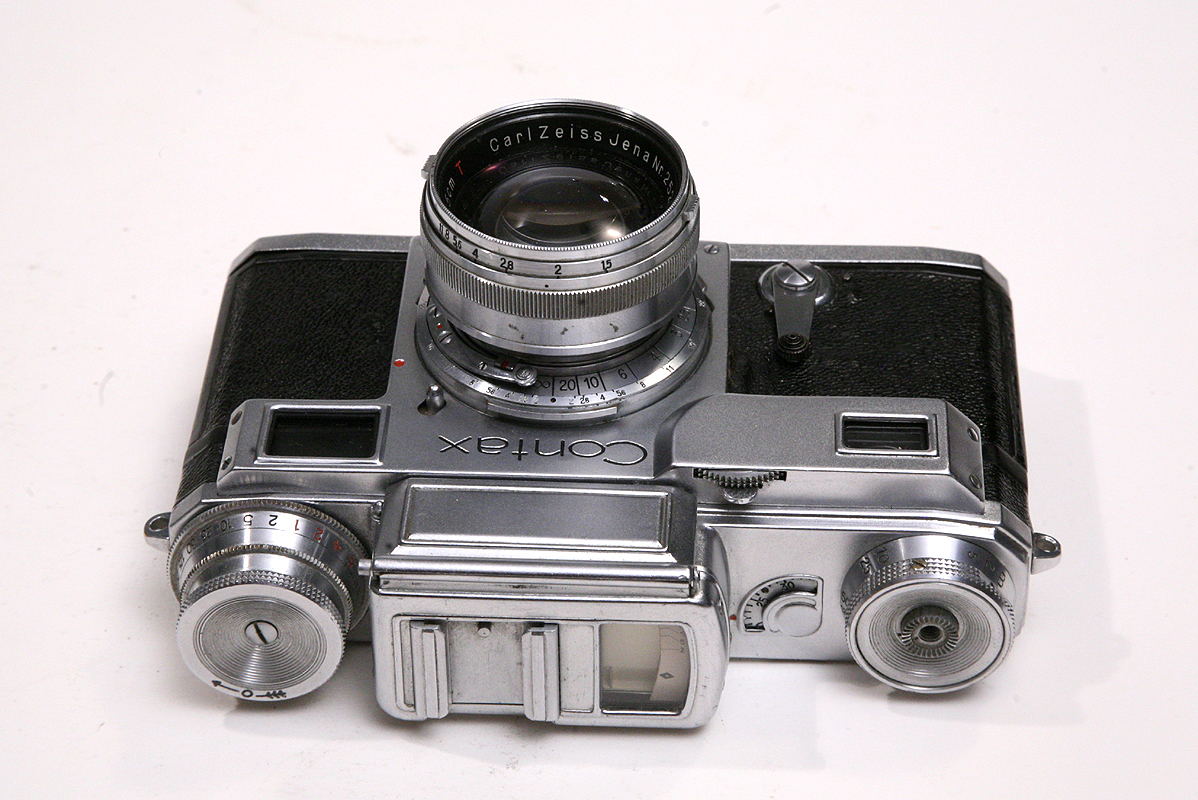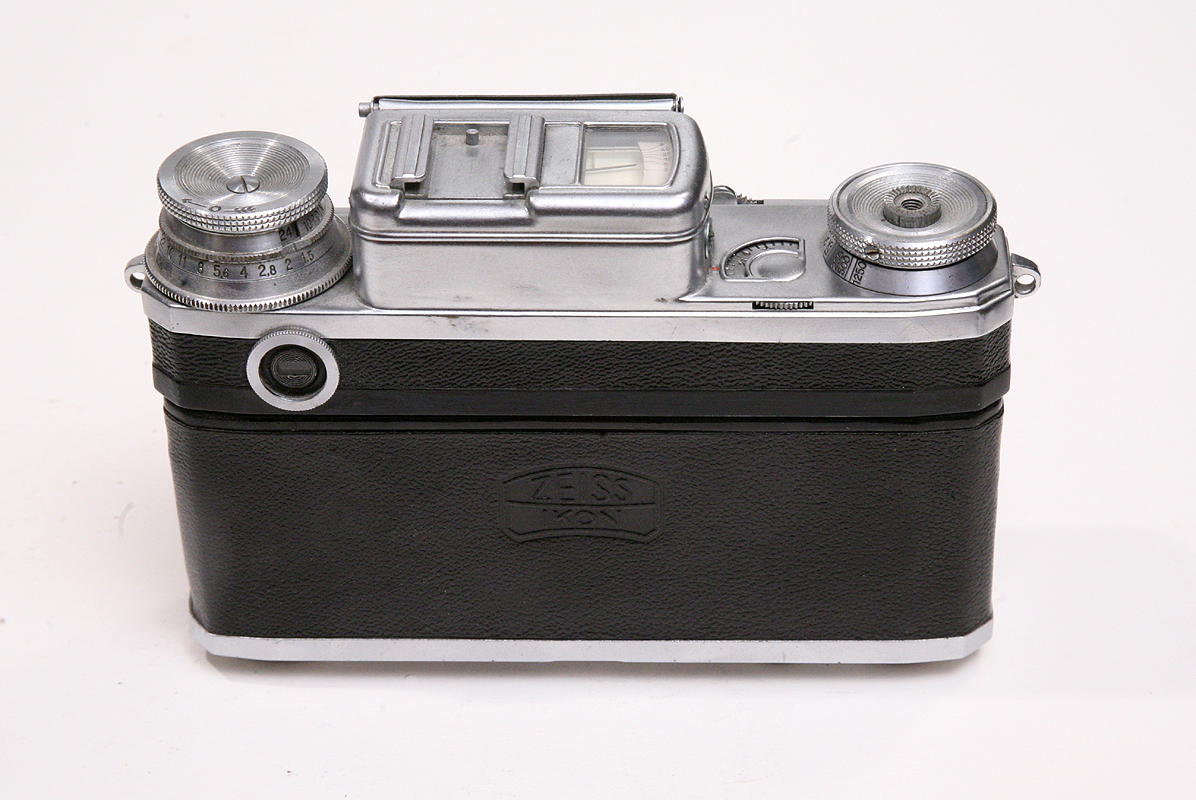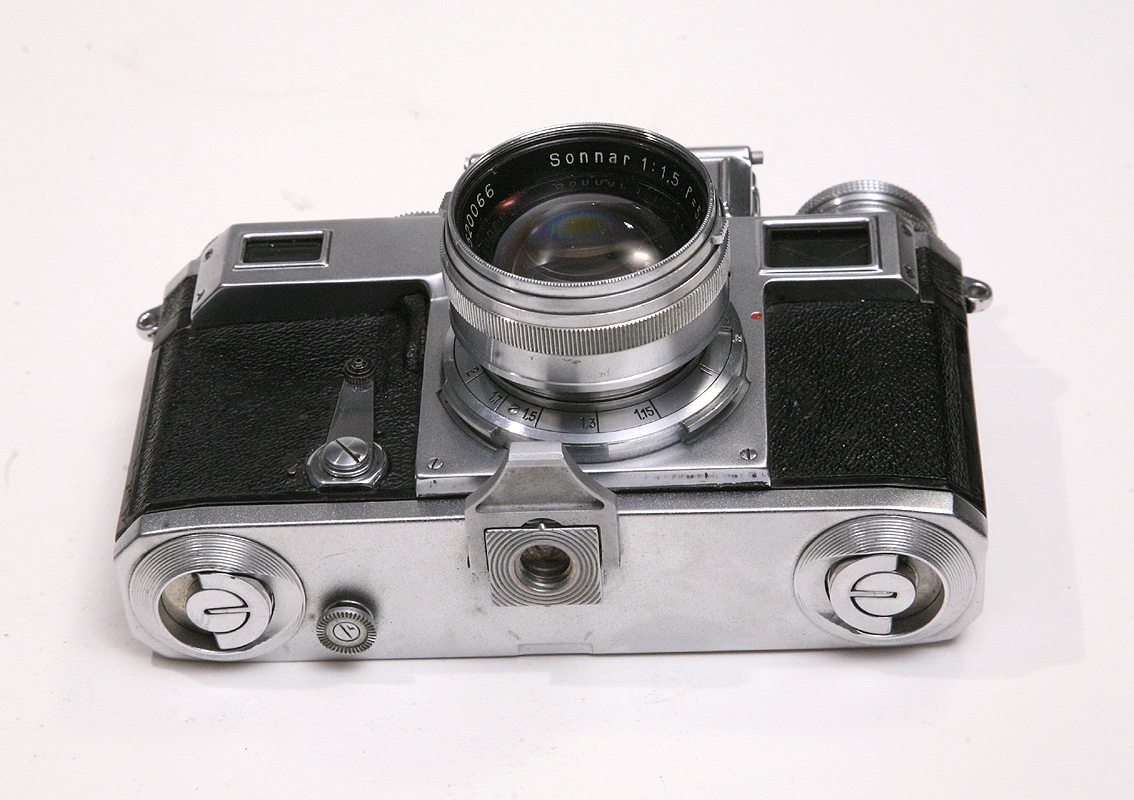
Photographica Pages
An online guide to collectable cameras and related stuff
Zeis Ikon Contax II and III
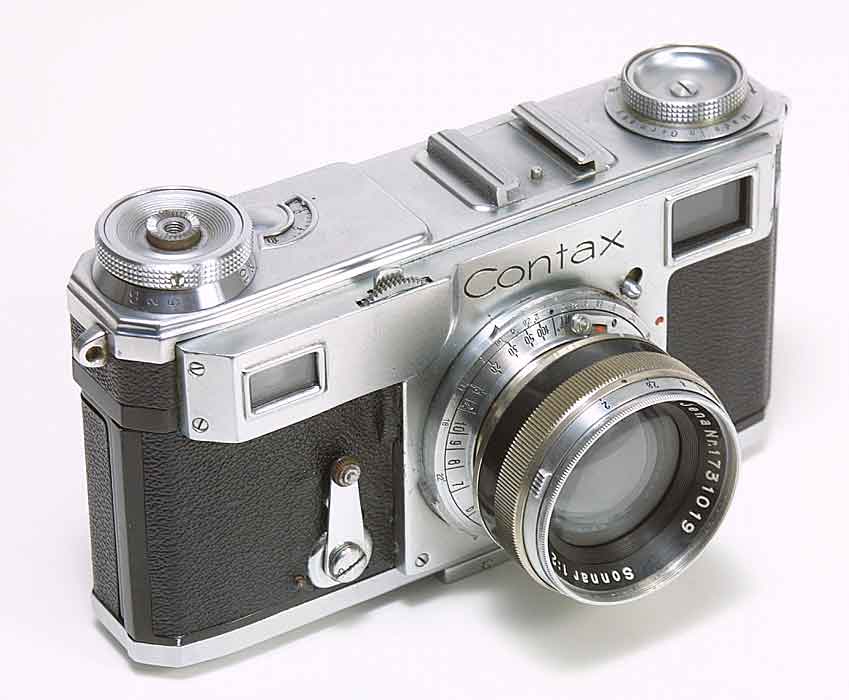
The Contax II with a 50/2 Sonnar transitional lens. Note that the lens is black
and nickel with a chrome front, and uses the same barrel as the black and nickel
50/1.5 Sonnar.

The Contax II with a 50/2 Sonnar transitional lens. Note that the lens is black and nickel with a chrome front, and uses the same barrel as the black and nickel 50/1.5 Sonnar.
The competition between Zeiss and Leitz brought out the best in both companies, a perfect example of how competition is beneficial for the marketplace. Leitz found themselves in a position of playing catch-up, and Zeiss was not about to let up the pressure. In 1935 Leitz released the Leica IIIa, which brought the top shutter speed up to 1/1000 of a second, the same as the Contax. In 1936 Zeiss countered with the Contax II and III, both a major leap in design from the Contax I.
The most noticeable difference is the finish, which is satin chrome on the exposed metal plates. This was following the lead of Leitz, which first offered their cameras with a chrome finish in 1933. The wind knob was moved from the front of the camera to the top, where Leitz placed theirs. So far, it sounds like Zeiss is playing catch-up. But Zeiss combined the rangefinder and viewfinder into one finder, a larger and brighter one at that. Leitz would not do this until the M3 of 1954. There was a self timer on the front. Leitz tried to offer one in 1939 on the Leica IIId, but it was problematic and only 427 were built over the course of eight years. In 1954 Leitz added it to the model IIIf, and it was also offered on the new M3 that same year. Zeiss also raised the top shutter speed to 1/1250, although at the top speed neither the Contax nor Leica shutter was really accurate enough for the extra top speed to be useful. As a consequence of this super fast top speed, today many Contax cameras cap (the shutter moves, but the curtains have no slit between them, and so no light actually reaches the film).
The difference between the Contax II and III is that the III has an uncoupled selenium light meter mounted on the top plate. The meter cell is covered by a metal door when it is not in use. Because the meter would make it difficult to rewind the film, the rewind knob is taller than that of the Contax II, and contains an exposure calculator.
In 1936 the offering of lenses from Zeiss had grown to include the 35/2.8 Biogon, the famous 180/2.8 Olympia Sonnar, 300/8 Tele-Tessar K and 500/8 Fernobectiv. Leitz had added the 28/6.3 Hektor, 50/1.5 Xenon, 90/2.2 Thambar (a specialized portrait lens with variable soft focus), 200/4 Telyt and 400/5 Telyt. The 135/4.5 Elmar had been replaced with an improved 135/4.5 Hektor.
With the onset of World War II, production shifted away from civilian products toward military ordinance. Cameras and optical goods were in high demand for the military. Although both makes were used by the branches of the armed forces, the Leica was generally the camera produced for the military. The Contax can be found with military markings, most commonly marked with a Reich Sadler over an "M" for Marine, which is the navy.
The end of the war also saw the end of the Contax II and III. The production line was located in the Russian occupied zone, and it, with all existing parts, were moved to Kiev as war reparations. The line was used to produce Kiev cameras, which were modified over the years and remained in production at least until the late 1980's.
The drawings were lost in the fire bombing, and it was decided to re-design the cameras rather than to try and recreate the old design. So ends the story of a pair of revolutionary cameras.
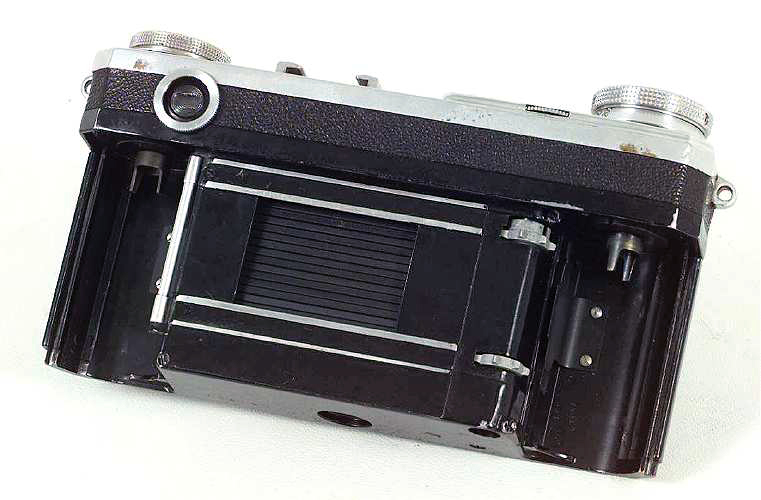
The Contax II with it's back and take up spool removed for loading film.
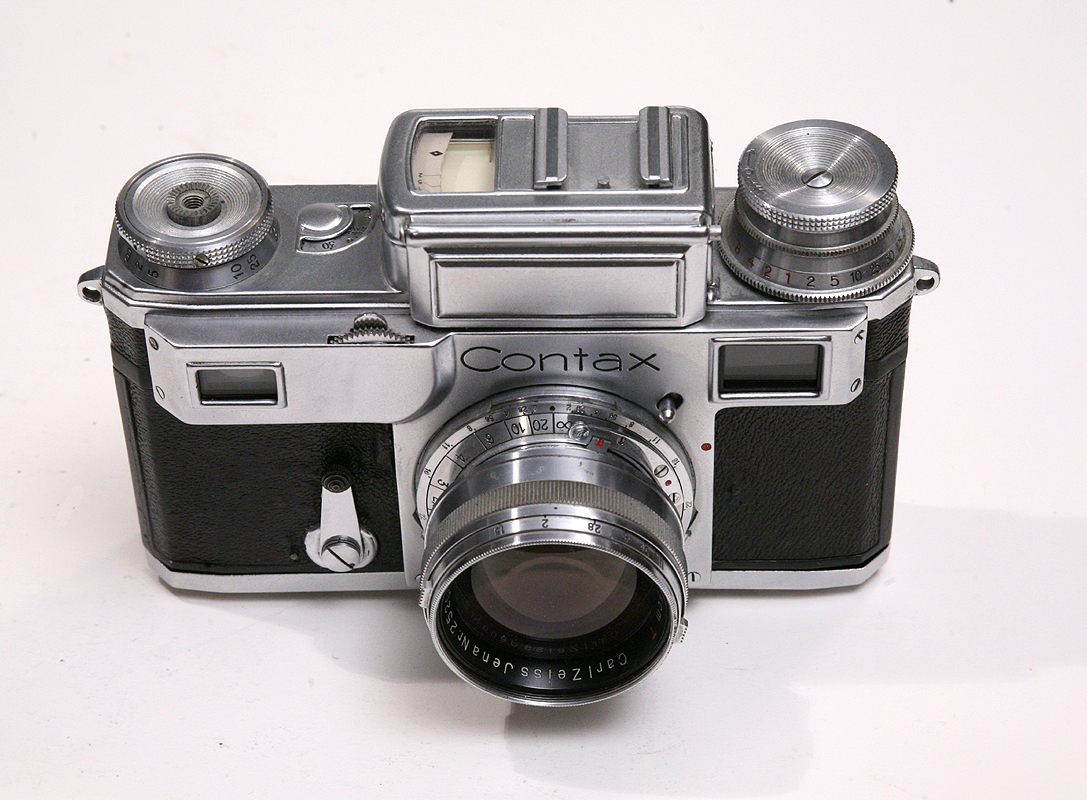
The Contax III with 50/1.5 Sonnar.
